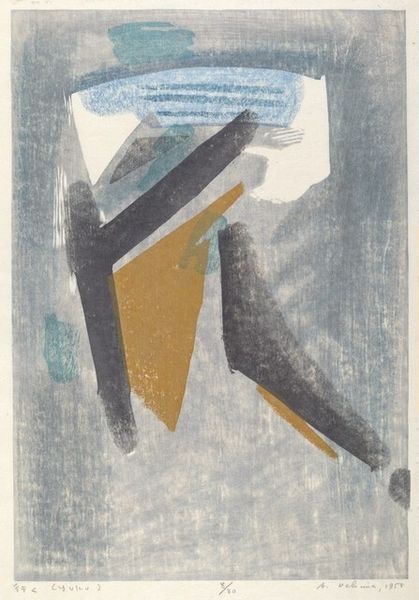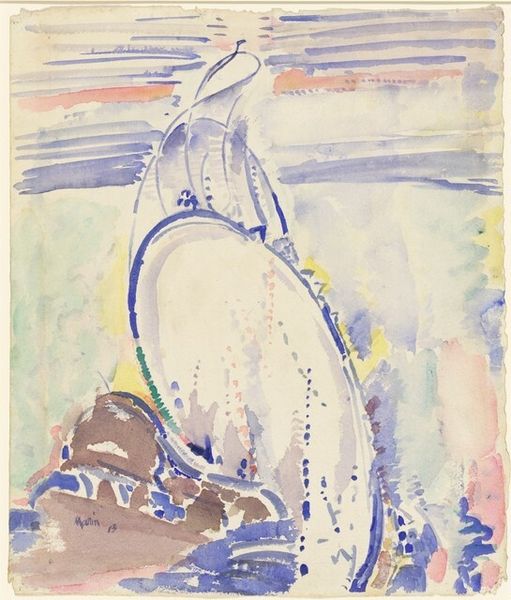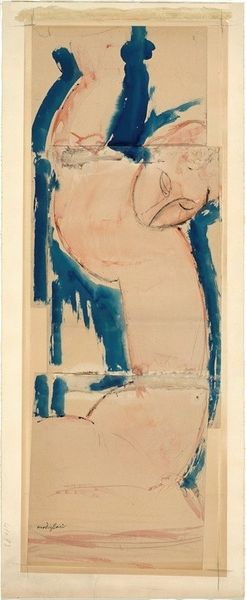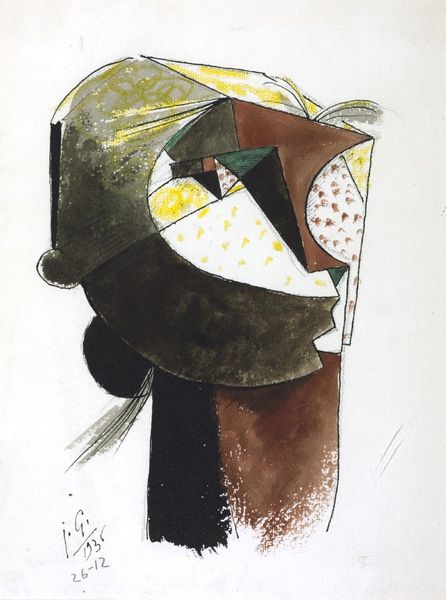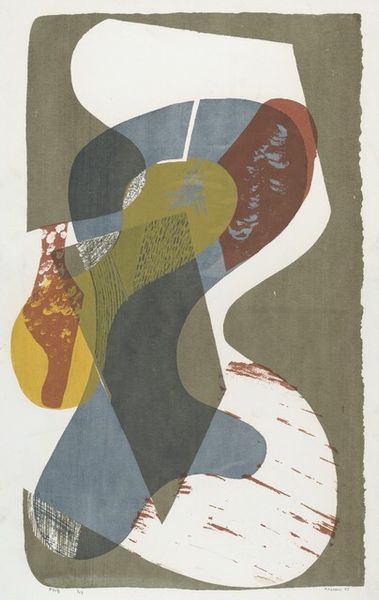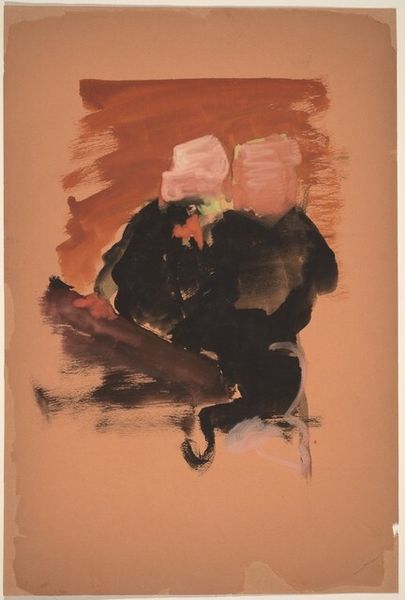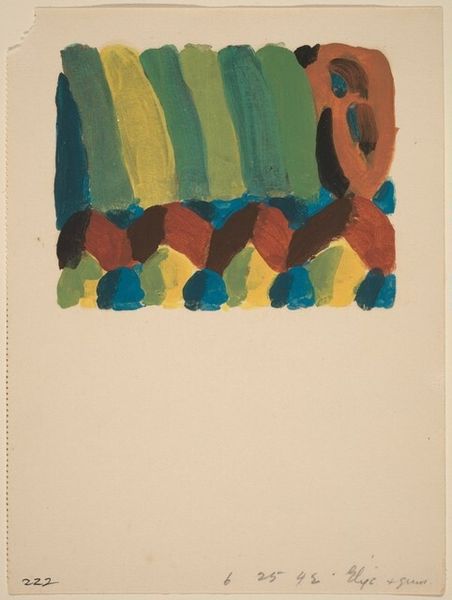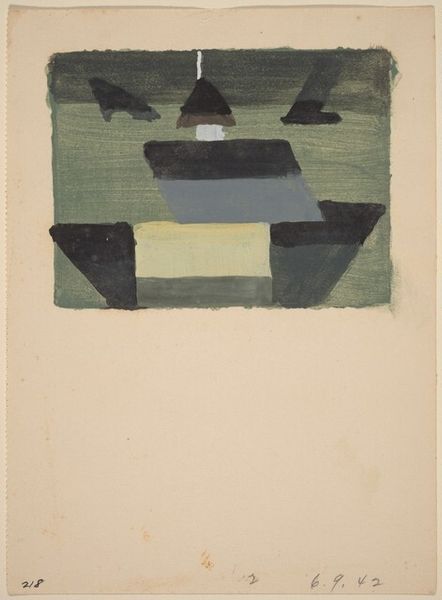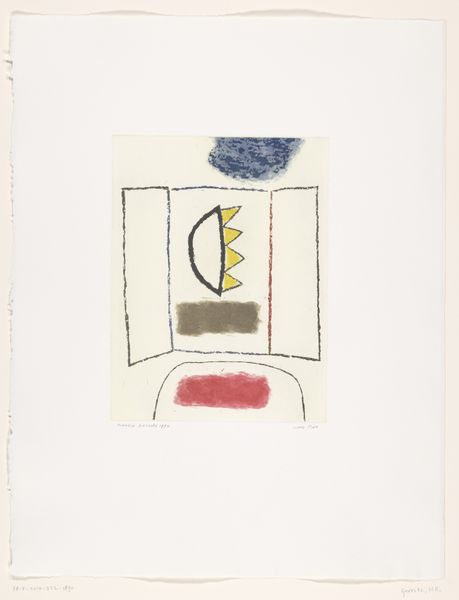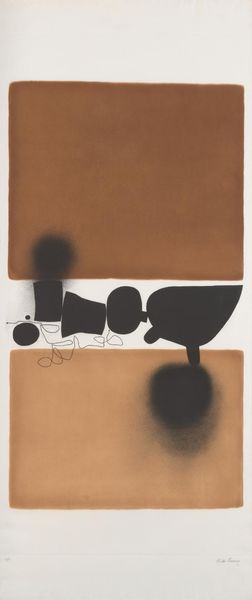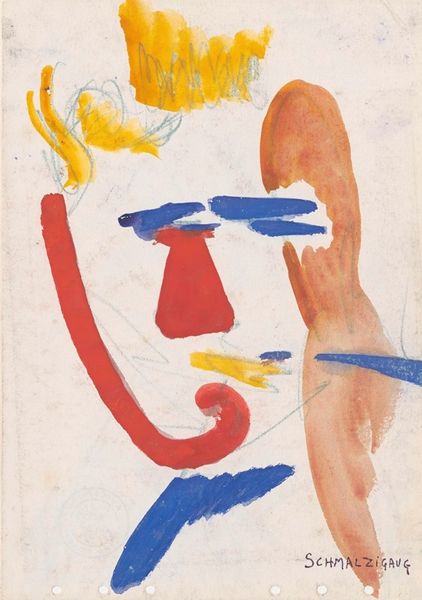
print, watercolor
#
abstract-expressionism
# print
#
watercolor
#
geometric
#
abstraction
#
modernism
Dimensions: block: 55.2 x 38 cm (21 3/4 x 14 15/16 in.) sheet: 61 x 46 cm (24 x 18 1/8 in.)
Copyright: National Gallery of Art: CC0 1.0
Curator: Today we're looking at Ansei Uchima’s 1966 watercolor and print work, "Spring Shower." It's an example of abstract expressionism, featuring geometric forms stacked vertically. Editor: It's a gentle image. I get a sense of quiet, almost meditative rain; there is a lot of soft light and muted colors, as if to convey a memory more than an observable phenomenon. It reminds me a bit of Rothko's color fields. Curator: Considering Uchima's biography, it's useful to look at his position within a politically charged atmosphere of artistic production. Uchima's work blends traditional Japanese art forms with modernism in a way that allows a nuanced understanding of diasporic identity, specifically examining what it means to negotiate between the globalizing influence of modern art and distinct cultural heritage in postwar American society. Editor: The use of watercolor lends itself so beautifully to conveying a sense of rain, or rather, its impact – dampness, streaks, transparency, fragility. How do you read the use of geometric shapes in such an emotive subject? Curator: Well, I think Uchima intentionally complicates simple emotional readings. We need to also think about the socio-political environment he's embedded in. The composition rejects easy, literal interpretation. The artist asks us to consider modern identities more broadly in intersection with geopolitics. Post-war identities are themselves collages, if you will, abstract recombinations that reject a single, legible definition. Editor: Yes, I agree. There is no concrete grounding to this art piece. As opposed to say a realistic painting or traditional landscape painting. What we're offered is something perhaps more akin to how the natural phenomena feels as an abstracted experience. Curator: Right. There are conversations here about authenticity, cultural exchange, the commodification of identity itself. These are some things the painting can mean in contemporary dialogues. Editor: Looking at it with all this in mind helps contextualize this piece as an active commentary. Thank you for your insights. Curator: Thank you. These conversations bring depth to an artwork, highlighting some of the complicated ways identities are negotiated in post-modern societies.
Comments
No comments
Be the first to comment and join the conversation on the ultimate creative platform.
